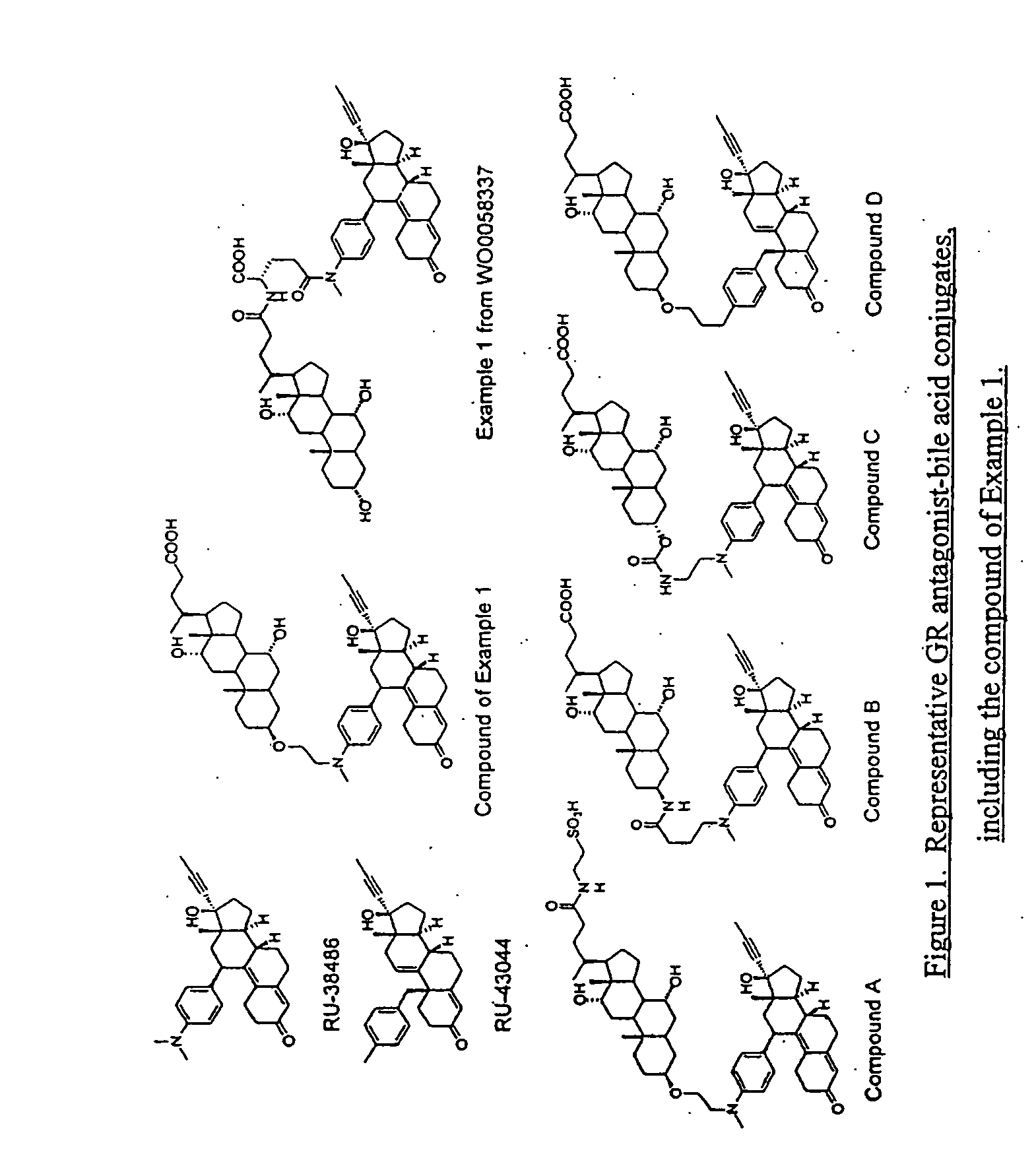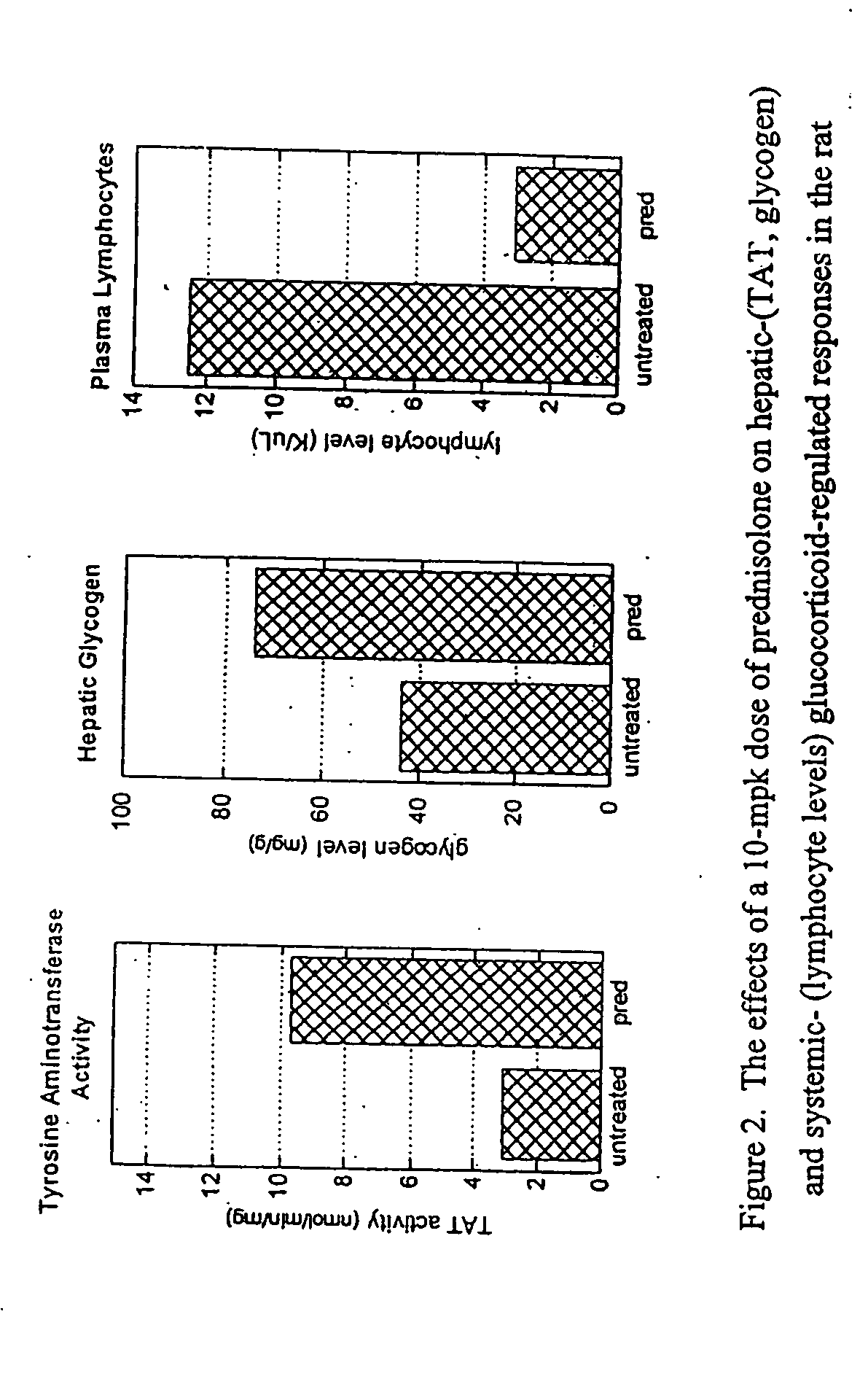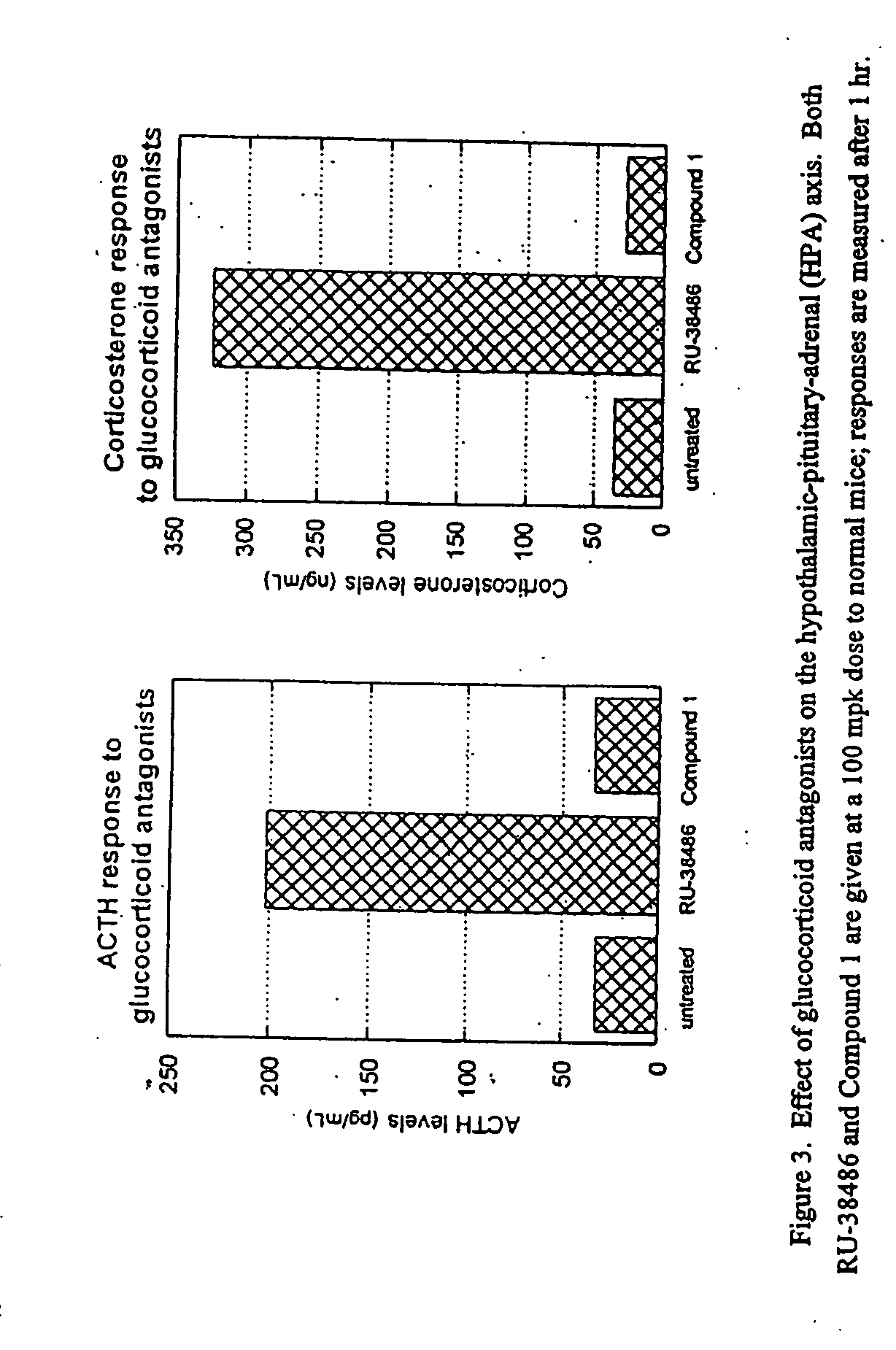Novel glucocorticoid receptor ligands for the treatment of metabolic disorders
a glucocorticoid receptor and metabolic disorder technology, applied in the field of compounds, can solve the problems of hyperglycemia, hyperglycemia, and tendency to hypoglycemia, and achieve the effect of elevating the hepatic glucocorticoid level
- Summary
- Abstract
- Description
- Claims
- Application Information
AI Technical Summary
Benefits of technology
Problems solved by technology
Method used
Image
Examples
example 1
(3β,5β,7α,12α)-7,12-Dihydroxy-3-{2-[{4-[17β-hydroxy-3-oxo-17α-prop-1-ynylestra-4,9-dien-11β-yl]phenyl}(methyl)amino]ethoxy}cholan-24-oic acid
[0109]
example 1a
Methyl (3α,5β,7α,12α)-7,12-dihydroxy-3-(methanesulfonyloxy)cholan-24-oate
[0110] To a solution of cholic acid methyl ester (25 g, 59.2 mmol) in pyridine (75 mL), stirring at 0° C., was added methanesulfonyl chloride (5.04 mL, 65.1 mmol) dropwise over 30 minutes. The reaction was allowed to warm to room temperature and stir for 6 hours. The reaction mixture was poured into a mixture of EtOAc (200 mL), 1 N HCI (200 mL), and ice. The layers were separated, and the organic layer was washed with 1N HCI (2×50 mL), dried (Na2SO4) and concentrated to provide a light yellow oil. The crude material was passed through a plug of silica eluting with 50% EtOAc / hexanes to provide 24.5 g (83%) of the title compound as a light yellow oil that foamed into a white, sticky foam when placed on the high vacuum pump.
example 1b
Methyl (3β,5α,7α,12α)-7,12-dihydroxy-3-(2-hydroxyethoxy)cholan-24-oate
[0111] A pressure vessel (250 mL flask) containing the compound of Example 1A (10.0 g, 20 mmol) was charged with ethylene glycol (20 mL) and pyridine (4 mL) at ambient temperature, sealed and then heated at 120° C. for 4 hours. The reaction was cooled to ambient temperature, diluted with EtOAc (50 mL), and quenched with 1N HCI (30 mL). The layers were separated and the organic layer was washed with 1N HCI (2×30 mL), dried (Na2SO4), and concentrated. Purification by silica gel chromatography (10%→40% acetone / hexanes) provided the title compound (3.5 g, 37%). MS (ESI) m / e 484 (M+NH4)+
PUM
| Property | Measurement | Unit |
|---|---|---|
| body weight | aaaaa | aaaaa |
| temperature | aaaaa | aaaaa |
| temperature | aaaaa | aaaaa |
Abstract
Description
Claims
Application Information
 Login to View More
Login to View More - R&D
- Intellectual Property
- Life Sciences
- Materials
- Tech Scout
- Unparalleled Data Quality
- Higher Quality Content
- 60% Fewer Hallucinations
Browse by: Latest US Patents, China's latest patents, Technical Efficacy Thesaurus, Application Domain, Technology Topic, Popular Technical Reports.
© 2025 PatSnap. All rights reserved.Legal|Privacy policy|Modern Slavery Act Transparency Statement|Sitemap|About US| Contact US: help@patsnap.com



